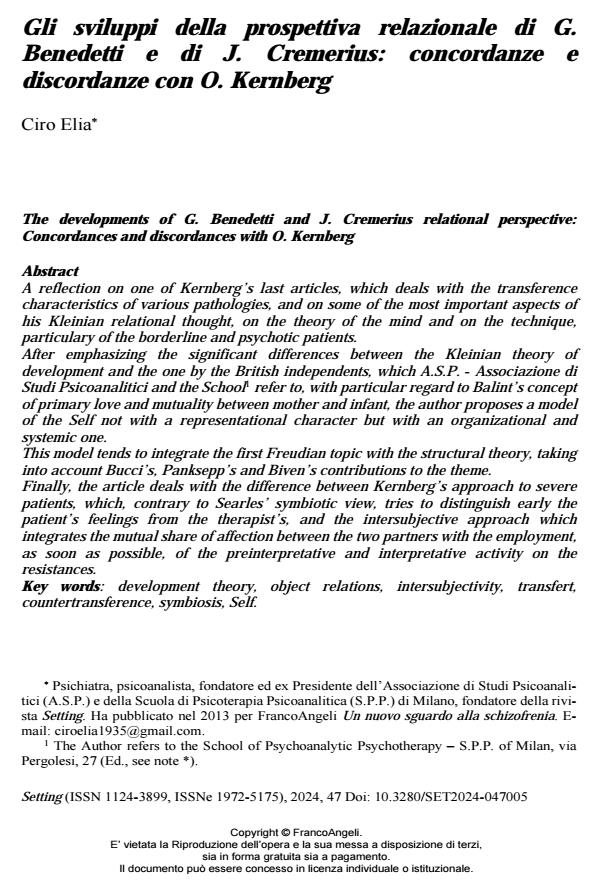The developments of G. Benedetti and J. Cremerius relational perspective: Concordances and discordances with O. Kernberg
Journal title SETTING
Author/s Ciro Elia
Publishing Year 2024 Issue 2024/47
Language Italian Pages 27 P. 79-105 File size 298 KB
DOI 10.3280/SET2024-047005
DOI is like a bar code for intellectual property: to have more infomation
click here
Below, you can see the article first page
If you want to buy this article in PDF format, you can do it, following the instructions to buy download credits

FrancoAngeli is member of Publishers International Linking Association, Inc (PILA), a not-for-profit association which run the CrossRef service enabling links to and from online scholarly content.
A reflection on one of Kernberg’s last articles, which deals with the transference characteristics of various pathologies, and on some of the most important aspects of his Kleinian relational thought, on the theory of the mind and on the technique, particulary of the borderline and psychotic patients. After emphasizing the significant differences between the Kleinian theory of development and the one by the British independents, which A.S.P. - Associazione di Studi Psicoanalitici and the School refer to, with particular regard to Balint’s concept of primary love and mutuality between mother and infant, the author proposes a model of the Self not with a representational character but with an organizational and systemic one. This model tends to integrate the first Freudian topic with the structural theory, taking into account Bucci’s, Panksepp’s and Biven’s contributions to the theme. Finally, the article deals with the difference between Kernberg’s approach to severe patients, which, contrary to Searles’ symbiotic view, tries to distinguish early the patient’s feelings from the therapist’s, and the intersubjective approach which integrates the mutual share of affection between the two partners with the employment, as soon as possible, of the preinterpretative and interpretative activity on the resistances.
Keywords: development theory, object relations, intersubjectivity, transfert, countertransference, symbiosis, Self.
Ciro Elia, Gli sviluppi della prospettiva relazionale di G. Benedetti e di J. Cremerius: concordanze e discordanze con O. Kernberg in "SETTING" 47/2024, pp 79-105, DOI: 10.3280/SET2024-047005